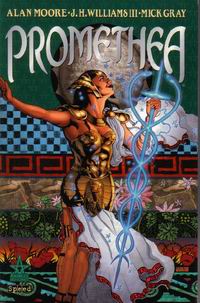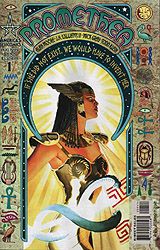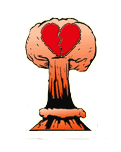
Around about the time I was 5 years old, I saw an episode of the animated Star Trek titled The Practical Joker. The only thing I remembered was the crew being trapped in a holographic “rec-room” with a raging snowstorm. Later, I managed to catch three more episodes: one where Kirk and Spock get turned into amphibians, another where Spock gets a giant clone, and finally an episode where the Enterprise ends up in a reversed universe. If you think webbed and giant crewmembers seem weird, the reversed universe episode was the most bizarre, with black stars, a white void and people who age backwards; i.e. you’re born elderly and then grow into an infant. Weird huh. My memories are so vague, I'm still not sure if I saw the cartoon or the original series first.

So, I liked the animated Star Trek well enough as a child but basically forgot about it, particularly after the movies and Next Generation showed up. Over the years, though, I found myself getting bored with the various incarnations of Star Trek. Sure the FX improved greatly, but the space anomalies, the techobabble, and the Rick Berman style became too much to take. Naturally, I became drawn to the original Star Trek series again for its simplicity, straightforward sci-fi, and cheesy fun.
 A few years ago, I picked up a used VHS tape of the animated Trek to satisfy the urge for more TOS episodes and to see if the old cartoon held up. It has Shatner, Nimoy, and most of the regular cast so it must be worth a look right? Well I have to say I was intrigued, especially because the video featured Harry Mudd, but I didn’t buy anymore and waited for the DVDs. Sure enough, after driving Star Trek into the ground with Enterprise, Paramount finally decided to release the animated series on DVD for Trek’s 40th anniversary as it had nothing else sell. So, with the help of an Xmas gift card I picked it up.
A few years ago, I picked up a used VHS tape of the animated Trek to satisfy the urge for more TOS episodes and to see if the old cartoon held up. It has Shatner, Nimoy, and most of the regular cast so it must be worth a look right? Well I have to say I was intrigued, especially because the video featured Harry Mudd, but I didn’t buy anymore and waited for the DVDs. Sure enough, after driving Star Trek into the ground with Enterprise, Paramount finally decided to release the animated series on DVD for Trek’s 40th anniversary as it had nothing else sell. So, with the help of an Xmas gift card I picked it up.  To be honest, I found the series quite fun to watch despite the clunky animation. The best part is hearing the voices of the original actors. But beyond the reunion, there’s all manner of weird new aliens, strange vistas, new technology, and odd adventures that would have been impossible in the original Star Trek.
To be honest, I found the series quite fun to watch despite the clunky animation. The best part is hearing the voices of the original actors. But beyond the reunion, there’s all manner of weird new aliens, strange vistas, new technology, and odd adventures that would have been impossible in the original Star Trek. I particularly enjoyed the new crewmembers, the feline M’Ress and the six limbed Arex.
I particularly enjoyed the new crewmembers, the feline M’Ress and the six limbed Arex.There’s a nice sense of continuity with the first Star Trek as it has several episodes that are sequels to original shows: Cyrano Jones and the tribbles return in More Tribbles, More Troubles; Harry Mudd’s back with a love drug in Mudd’s Passion; and the vacation planet from Shore Leave (remember the white rabbit) returns in Once Upon a Planet. The first two are notable as the actors who played Jones and Mudd reprise their roles for the cartoon versions.
 A prominent aspect of the animated Star Trek is that it opens things up visually. Star Trek TOS can get a little claustrophobic with the small sets, and forced perspective backgrounds. So the strange cartoon vistas on the animated show are a welcome respite from the usual cramped design. It’s about outer space so the feeling of wide-open space is an advantage the Animated Star trek has over the original.
A prominent aspect of the animated Star Trek is that it opens things up visually. Star Trek TOS can get a little claustrophobic with the small sets, and forced perspective backgrounds. So the strange cartoon vistas on the animated show are a welcome respite from the usual cramped design. It’s about outer space so the feeling of wide-open space is an advantage the Animated Star trek has over the original.
Star Trek the Animated Series holds the distinction of being quasi canon, meaning that it has been mined for ideas for the later live action series but is not completely part of the ‘real’ history of the Star Trek Universe. The episode Yesteryear is often cited for its importance in developing many details of Vulcan society while fleshing out Spock’s family history and childhood. Other tidbits from TAS include: the appearance of Robert April the first captain of the Enterprise, first use of a ‘holodeck,’ the fist time Tiberius is mentioned as Kirk’s middle name, and the only “Beam us up Scotty” ever uttered. The series is also interesting for having the first Native American crewmember, Uhura taking command of the Enterprise and the appearance of the aquashuttle.

The Animated Star Trek may not be for everybody. There are goofy elements like the inflatable Enterprise decoy for example. Basically, you have to like Star Trek, and not hate 1970’s slow animation to get the most fun out of it. But TAS does extend the life of the original by capturing the iconic nature of Star Trek that we’re familiar with. The simple features of the animated crew do strangely look like the original cast and the sci-fi technology is consistent with the sleek designs of the live action Trek. Plus there is some really fun sci-fi concepts on the show. This is due mostly to the use of the original series ‘bible’ and from the participation of Star Trek writer D.C. Fontana.

Star Trek the Animated Series might be an acquired taste even for a trekkie, but if you long for more adventures with the original cast and crew, it’s just what the doctor ordered. Doctor McCoy that is. Plus, who wouldn’t want a six-limbed crewman on the bridge, right?
-Swinebread


























